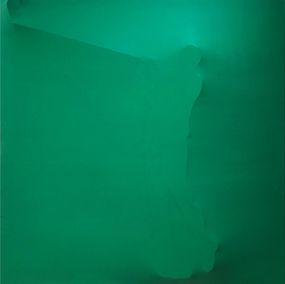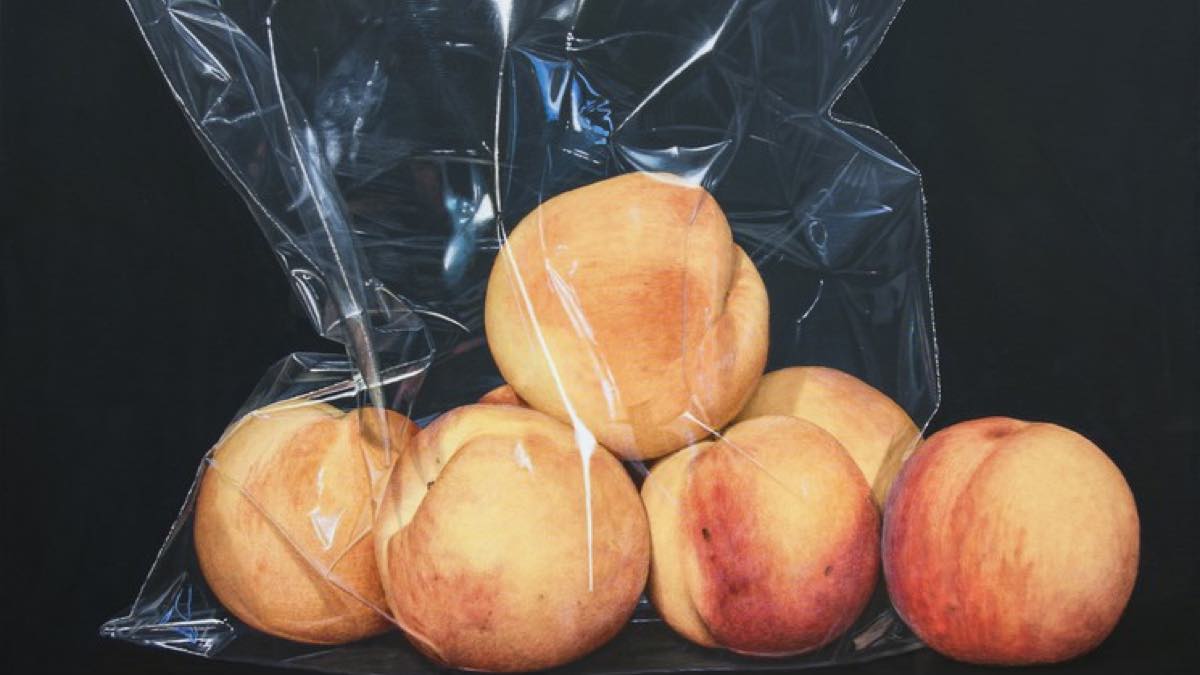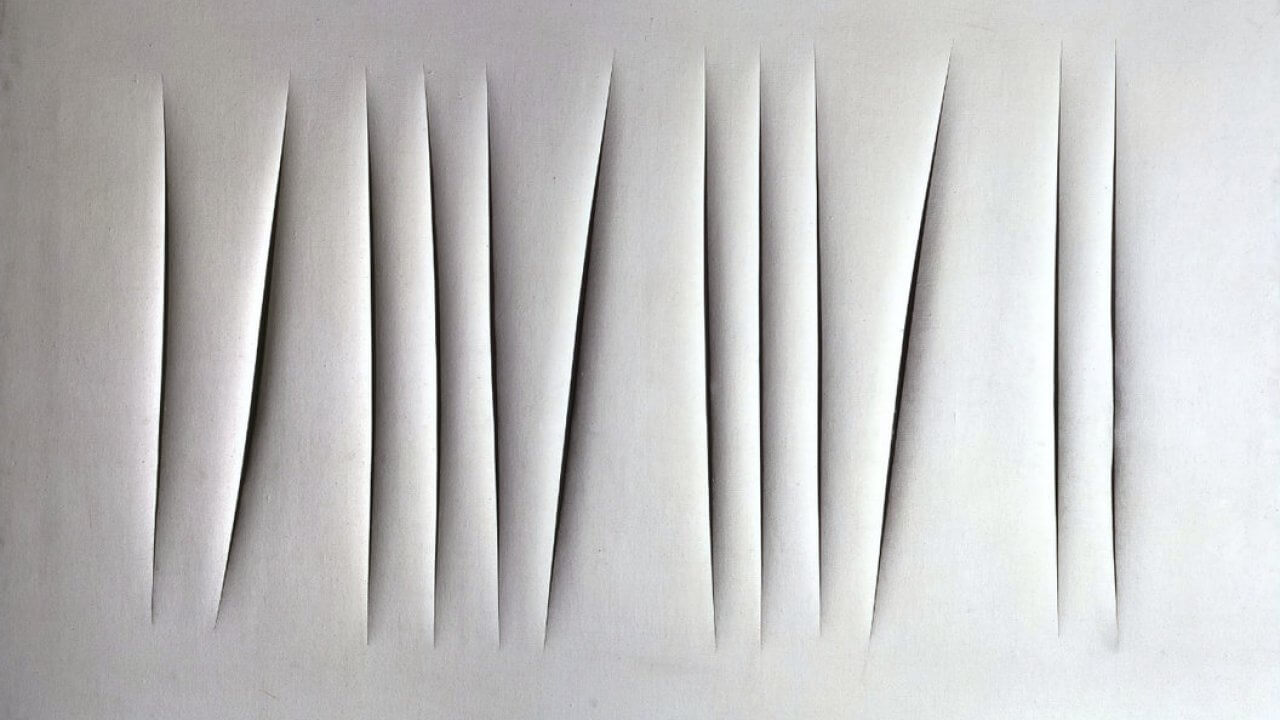
Monochrome Art: Why Do Artists Create It?

Monochrome art seems to be the simplest thing for many, although the omnipotence of color, in its humblest, purest form, transcends the viewer’s vision. The genre leaves no room for figuration, while its contemporary representations question the specificity of art. Artists creating monochrome art benefit from total freedom in their approach and technique.
Today, Artsper invites you to dive into an ocean of colors, to discover monochrome art…
Absolute abstraction, the starting point for monochrome art
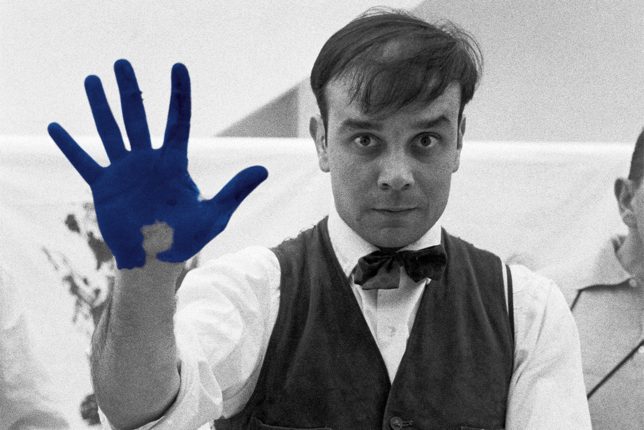
Early 20th century’s modern art was marked by the advent of abstraction, a visual language free of any defined representation. Its international dimension was encouraged by the work of innovative artists with unique visions.
The term “monochrome” comes from the Greek mono, meaning “only” and chroma, meaning “color”. While monochrome art originally included works with different shades, today it is limited to works of a single color. We surely owe this major change to Yves Klein, for whom monochrome was a vocation. His Klein Blue, or IKB, quickly elevated to the rank of iconic hue in modern art. It helped popularize a practice that has now become a proper genre, along with portrait, landscape or still life.
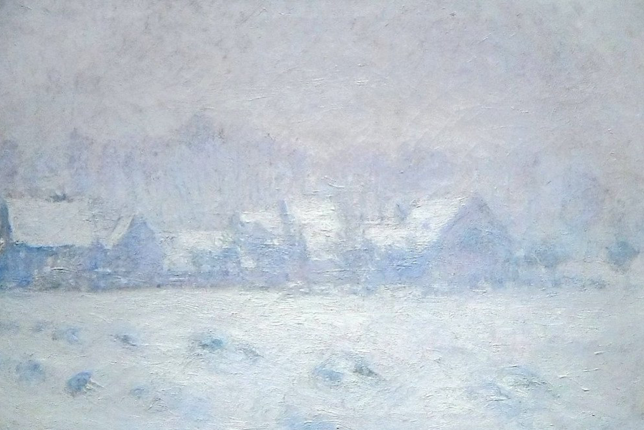
Actually, contemporary monochrome art is prefigured by other research, perhaps less obvious from the uninitiated spectator’s point of view. The Impressionist group focused all its attention on light and its effects on color. Famous paintings such as Effet de neige à Giverny (1893) question the sometimes very fine line between figuration and abstraction, without ever crossing it. Indeed, Claude Monet‘s oil on canvas is dressed in a unique hue, a bluish white reminiscent of a snowy day in Normandy… The work is magnified by almost palpable brushstrokes, creating unique patches of color which perfectly represent impressionism!
The roots of monochrome art

How to talk about monochrome art without talking about Suprematism and its creator, Kasimir Malevich? Painter, draughtsman, sculptor and theorist, Malevich seems to be a pioneer of abstract and indeed, monochrome art. In 1915, the artist unveiled a modest-looking canvas entitled Black Square. This work, a true emblem of a new era, perfectly embodies the Russian Suprematism of the early 20th century. The Suprematist theory derives from Malevich’s recent cubo-futurist period. Primary colors, geometric shapes and dynamics were then the ingredients of a brilliant recipe. In Malevich’s art, the two-dimensionality of the canvas as a medium is embraced, and even celebrated.

It is with White on a White (1918) that Malevich definitively enters the world of non-representation, where nothingness is no longer frightening, but quite striking. He then started exploring pure color juxtaposed with pure form. Symbolically, the artist opens the doors of this world of infinite possibilities to many contemporaries, who will also find something magical in the degree zero of painting. Indeed, monochrome art makes us forget the material, the symbols and the time. It is about the artist’s sensation, which can sometimes be disturbing, but also amazing.
The theory behind the genre

There is no precise and universal reason that would motivate artists to create monochrome art. Each era, each country contains its own mysteries and specificities… However, monochrome art does surprise people. It arouses the curiosity of the spectator, in response to an esoteric language sometimes out of their understanding, although it leaves so much room for imagination. This is where the particularity of the genre lies… Have you ever visited an exhibition and came across a simplistic-looking monochrome work, wondering what’s so special about it? For many, total abstraction is actually quite disturbing because it refers to nothingness. It sometimes calls for self-analysis, and deeper questioning. What do I see? What do I not see? Sometimes leading to: Who am I ?

The dimension of monochrome art can be frightening. With fear comes rejection, but humor has the power to heal… Art history has proven this! Let’s go back in time… In 1882, a group of Parisian artists produced the first monochromes in order to tease the Impressionists. In their opinion, they were too academic, too serious and too artistic! The Incohérents aimed to amuse the French with their parodies and puns. At their head was Jules Lévy, an acclaimed satirist. The Incohérents used everything at their disposal to mock the bourgeoisie and, without knowing it, built the foundations of two major movements of the 20th century, abstraction and surrealism… In 1882, Paul Bilhaud presented his first black monochrome. The idea seduced Alphonse Allais, who produced a disruptive series of seven monochromes from 1882 to 1890.
A multitude of interpretations
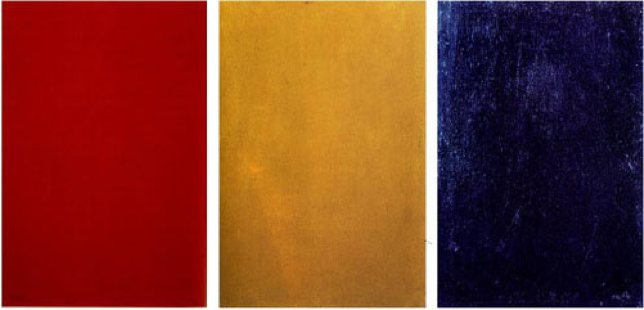
Monochrome art has no limits and allows for all kinds of experimentation in terms of textures, surfaces, effects…. To paraphrase Alexander Rodtchenko, master of Russian constructivist art, it allows to bring back painting to its original state, being the matter. He aims to demystify it, notably with his three square paintings entitled Pure Red Color, Pure Yellow Color, Pure Blue Color (1921) in reference to the three primary colors. He describes this iconic piece as “the last possible painting”.
Later, Władysław Strzemiński theorizes unism, which aims to eliminate all non-plastic values and become one with color, surface, and material. His art rejects all justification.
It’s also worth mentioning Pierre Soulages who transmutes black with his “Outrenoirs”, which have no title and are defined above all by their materiality and their presence; or even Lucio Fontana who cuts his canvases almost turning them into sculptures and recalling the importance of gesture.
Another artist, Pier Paolo Calzolari, an emblematic figure of Arte Povera, assembles burnt wooden boards in a specific a way to compose a monochrome, entitled Bois noir.
The importance of the viewer’s perception

Robert Rauschenberg and Ad Reinhardt were among the precursors of minimalism and conceptual art in the 1950s. Their huge canvases work as imaginary screens, inviting the viewer to question their own existence. This take on monochrome proves that it is in the void that one finds the immensity of the soul…
It is with Ellsworth Kelly that form and content come together. What matters is the viewer’s retreat and his responsibility in their own perception of the world. It is from these observations that his “object paintings” or “shaped canvases” are born. They completely redefine the relationship between the viewer and the surrounding space.
Finally, in 2015, Robert Ryman’s monochrome Bridge (1980) sold for $20.6 million at Christie’s. The sale created a great debate in the art world!
Obviously, monochrome art does not only divide the public. Many artists also reject it and sometimes even avoid it. Some gravitate around it, trying to attain the sublime and simplicity, without ever resolving to fully embrace it.
Korean monochrome art, Dansaekhwa
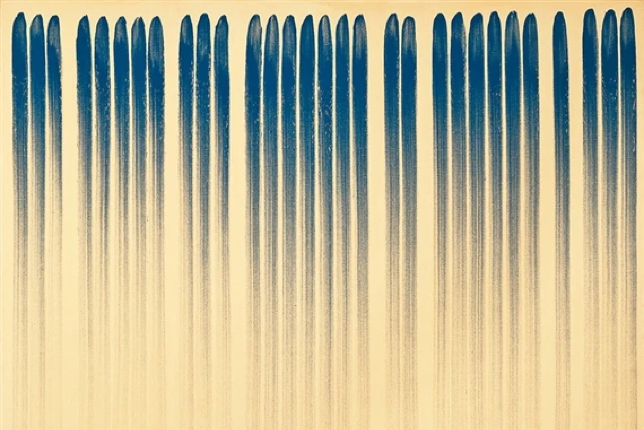
Korean monochrome “Dansaekhwa” emerged in the 1970s. It is said to have developed as a direct reaction to the political and social crisis that followed the Korean War. The modern and anti-structural dimension of Dansaekhwa is opposed to the more classical style of painting that was then most valued in East Asia. Abstract painters began to experiment more, tearing the material, dipping the canvas, repeating their strokes. At the time, this artistic practice allowed them to escape political authority and restrictions. The group includes Korean masters such as Yoo Youngkuk, Kim Whanki, Lee Ufan, Chung Sang-hwa, Park Seo-Bo and many others…
The dynamic between the viewer and the work is central to the philosophy of Dansaekhwa. Korean artists use various techniques and materials to make their art a transcendent and, above all, a meditative sensory experience. The materials awaken under the viewer’s gaze and the work is not complete without the viewer’s gaze. From this dynamic emerges a true subject-object dichotomy.
Korean Dansaekhwa in the global art market
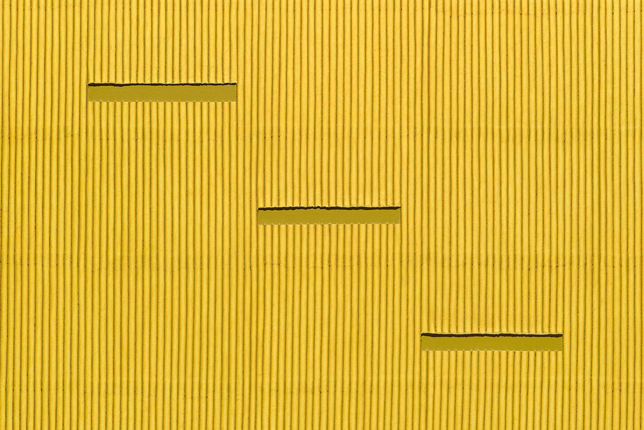
Dansaekhwa developed alongside the trends of Western art. The style was built in three stages: the 1950s, with Expressionism; the 1960s, with Minimalism, Abstraction and Arte Povera; and finally the 1970s, with Dansaekhwa as we know it today. By nurturing this international dimension while remaining true to its Korean roots, Dansaekhwa has succeeded in attracting collectors from around the world. Indeed, this monochrome art has quickly become the face of Korean art globally. According to Noh Sang-Kyoon, Korean Dansaekhwa can be read as an ode to nature and to the universe, and in this sense differs from the more formal Western way of seeing life.
We hope this overview of the different interpretations of monochrome art has allowed you to see the genre’s complexity… In 1955 in Paris, the Salon des réalités nouvelles refused to exhibit an orange monochrome by Yves Klein. The reason? “A single solid color, no, no, really, it is not enough, it is impossible!” What a journey has been made since then! To learn more about the subject, explore our selection of monochrome artworks on Artsper.
You might also like…

About Artsper
Founded in 2013, Artsper is an online marketplace for contemporary art. Partnering with 1,800 professional art galleries around the world, it makes discovering and acquiring art accessible to all.
Learn more














